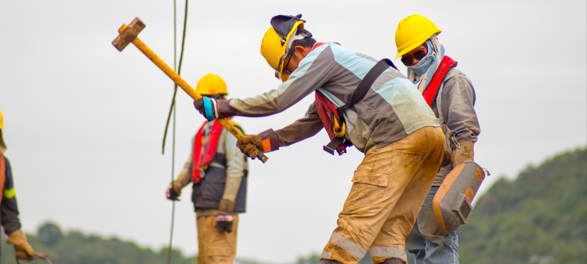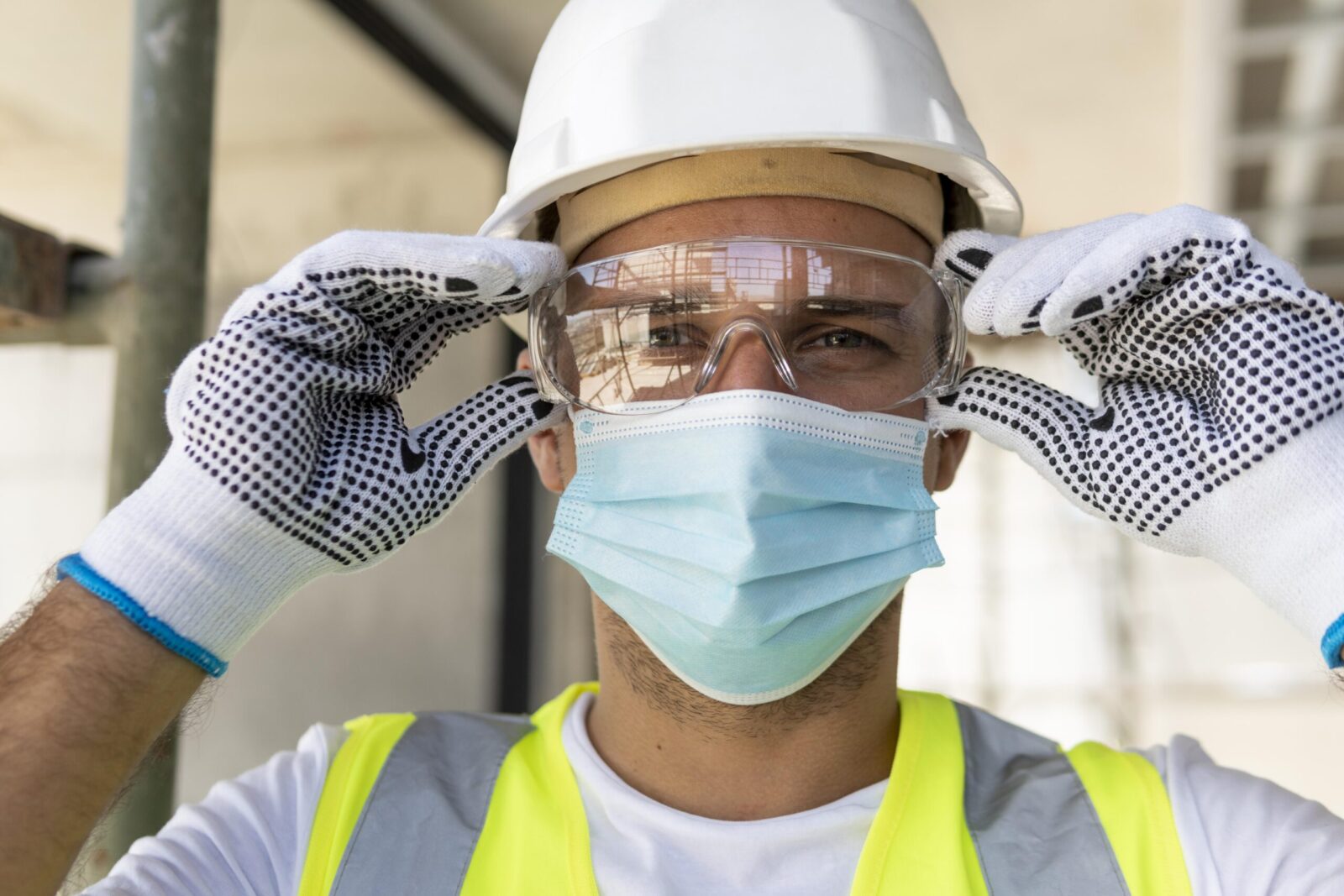
Essential PPE in the Food Industry: What You Need to Know
Overwhelmed by PPE options for food safety? Master your PPE selection for food workers safety with these practical tips.

Get 20€ off on your first order!
When working in construction, staying dry and comfortable is essential for productivity and safety. Rain pants, also known as rain trousers or waterproof pants, are a critical part of any construction worker’s gear, ensuring you can work confidently even in the harshest weather conditions. This guide promises to equip you with everything you need to select the perfect rain pants for construction work—from material choices to safety features—so you can make the best decision.
We’ll also help you anticipate the next challenge: pairing your rain pants with the ideal work jackets, boots, and accessories for total protection. For a broader overview, explore our main article, How To Choose The Right Rain Pants: Everything You Need To Know.

Durable materials in your rain pants provide essential protection against the challenges of construction sites, ensuring reliable performance in demanding environments. Look for:
For a closer look at ideal materials, check out this guide to construction rain gear.
Waterproofing is essential, and breathable rain pants enhance comfort by allowing airflow, helping you stay dry and at ease throughout your workday. Check for:
Learn more about these features in our related article, Top Materials for Rain Pants: Breathability Meets Waterproofing.
Proper fit ensures ease of movement and comfort during long workdays. Features to look for:
The following size chart is provided as a general reference, for the most accurate fit, consult verified size guides from trusted manufacturers or specific brand resources.
| Waist (cm) | Inseam (cm) |
| 76-84 | 74-79 |
| 85-92 | 79-84 |
| 93-100 | 84-89 |
Construction work often requires enhanced visibility and safety measures, which help improve worker confidence, efficiency, and overall job site safety. Prioritize rain pants with:
EU-standard compliant safety features provide peace of mind and ensure that your gear meets the highest benchmarks for workplace protection.
Rain pants should integrate well with your other workwear. Key considerations include:
For winter-specific rainwear, check out our Winter Work Pants collection.
While rain pants are essential, pairing them with the right work jackets and work boots ensures complete protection. Explore these related guides for more insight:
For additional gear, browse our collections of Work Pants and Rain Jackets.
Browse our full range of rain pants designed for heavy-duty use at Droppe Rain Pants Collection. With options tailored to European safety and quality standards, you can find reliable gear for any job.
Choosing the right rain pants for construction is about balancing durability, comfort, and safety. By understanding the key features, from material choices to fit and safety standards, you’ll ensure maximum performance on the job site. At Droppe, we offer a comprehensive selection of rain pants and related workwear to meet every need.
For additional guidance, explore our detailed article, How To Choose The Right Rain Pants: Everything You Need To Know. And if you’re ready for your next challenge, we’re here to help you select the perfect work jackets, boots, and accessories for complete protection on the job.
Most rain pants are machine washable, but it’s essential to check the care label for specific instructions. Use mild detergent, avoid fabric softeners, and opt for a gentle cycle. Hang dry to preserve waterproof coatings, and avoid high heat in dryers.
Yes, minor tears can often be repaired using waterproof patches or adhesive repair tape. For more extensive damage, professional repair kits designed for outdoor gear or seeking a professional repair service may be necessary.
Rain pants cover only the lower body and are typically paired with separate jackets, offering flexibility. Waterproof overalls provide full-body protection, ideal for tasks requiring extensive bending or working in heavy rain where water might seep between separate garments.
Regular maintenance helps maintain waterproofing. Clean them periodically to remove dirt and oils, and apply a durable water repellent (DWR) spray when water stops beading on the surface. Always follow the manufacturer’s instructions for re-waterproofing treatments.
Yes, lightweight rain pants with breathable membranes are ideal for year-round use. Look for options with ventilation zippers or detachable liners for versatility in different weather conditions. These pants balance protection with comfort for both summer and winter wear.
Thank you! You've signed up for our newsletter.



















Overwhelmed by PPE options for food safety? Master your PPE selection for food workers safety with these practical tips.

Struggling to maintain clear vision in demanding environments? This guide is here to help. By the end, you’ll know exactly...

Electricians across Europe face unique challenges that require reliable safety glasses to ensure both protection and efficiency. Whether safeguarding against...

Overwhelmed by PPE options for food safety? Master your PPE selection for food workers safety with these practical tips.

Struggling to maintain clear vision in demanding environments? This guide is here to help. By the end, you’ll know exactly...

Electricians across Europe face unique challenges that require reliable safety glasses to ensure both protection and efficiency. Whether safeguarding against...
Get 20€ off on your first order!
Save 30% by buying directly from brands, and get an extra 10€ off orders over €100
Save 30% by buying directly form brands, and get an extra 10€ off orders over €100